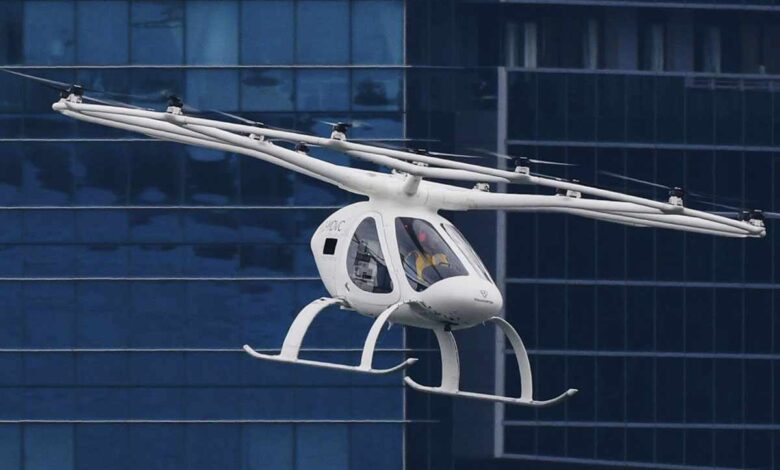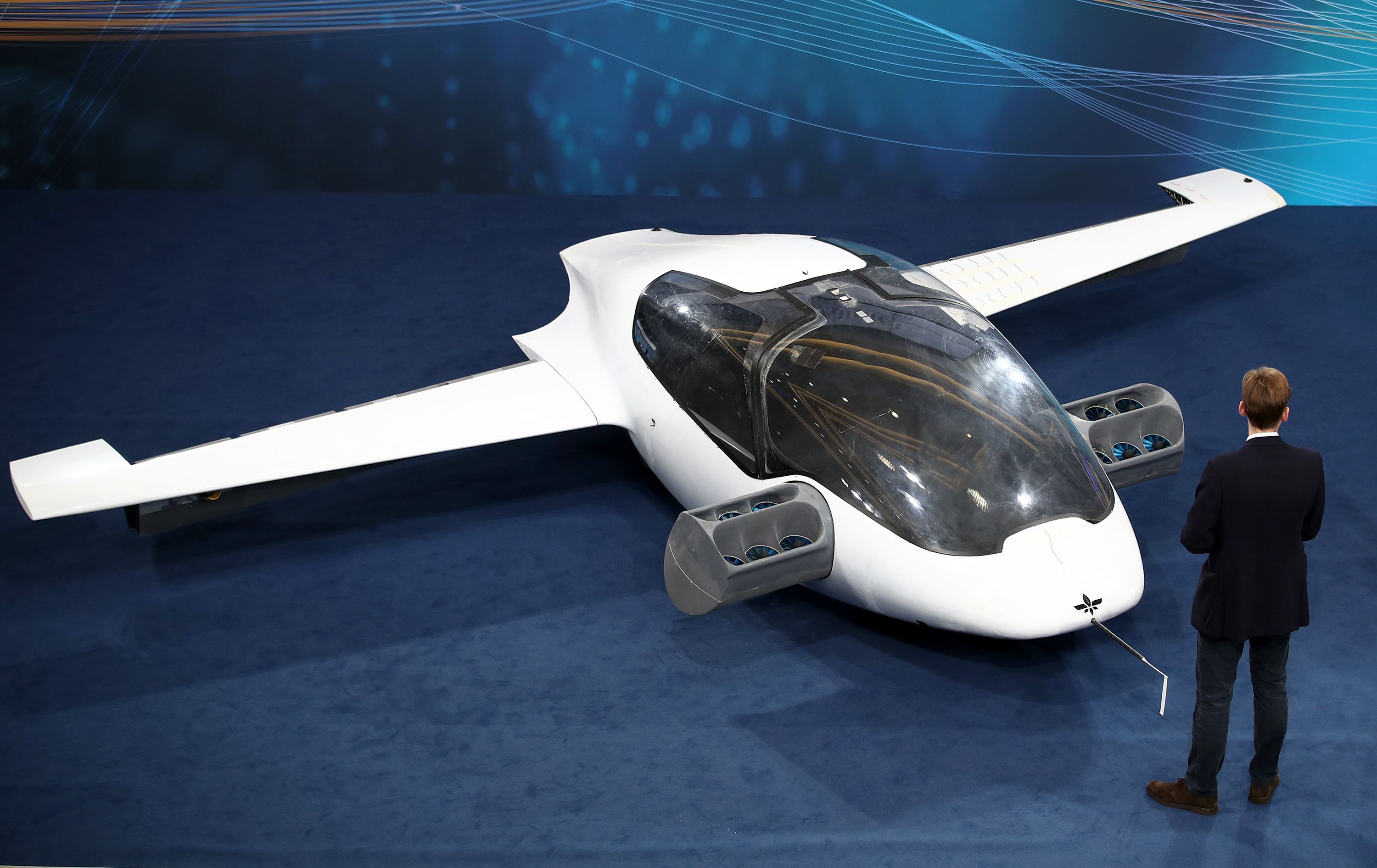Eve Air Mobility and Fly Blade India have entered into an agreement to improve the future of air mobility in India.

Take a glance! Up in the air! Not a bird… or a plane… It’s an electric VTOL or eVTOL! The allure of air taxi gliding past buildings has always been present in fantasies of futuristic smart cities. However, this sci-fi movie concept is likely to become a reality, with company Blade India placing an order for 200 electric planes from Brazil-based Eve Holding Inc.
Eve Air Mobility (EAM), a unit of Brazilian aircraft company Embraer, has purportedly collaborated with Gurugram-based Fly Blade India to offer the concept of an air taxi in the country in the coming five years.
The urban air mobility (UAM) player has committed to 2 lakh flying hours per year with Fly Blade, which means it will introduce 200 air taxis with Blade, each of which costs $3 million and will fly for 1,000 hours each year.
In addition, United Airlines recently announced a $15 million investment in the NYSE-listed EAM, as well as a conditional purchase deal for hundreds of four-seater electric aircraft, with deliveries set to begin in 2026.
Eve Air Mobility co-CEO André Duarte Stein — who has served in India for several years and is aware that the country is “particularly relevant for UAM” and that deliveries would be made here within weeks or months of when they commence operation in 2026.
The mechanism through which air taxis operate.
The air taxis will be piloted in the beginning and will have seating for four passengers as well as a cargo room, which is required for airport operations, according to Stein. The eVTOLs would weigh 2.5-3 tonnes and have a flying range of 100 kilometers, according to the co-CEO, who has lived and worked in India for many years.
All of these air taxis will carry a maximum take-off weight comparable to that of a helicopter. As previously stated, Bengaluru has the potential to absorb 300 eVTOLs for commuting between the city center, the airport, and nearby locations.
EAM intends to introduce six-seater automated air taxis that will fly without a pilot in the second phase of air carrier deployment in India.
At the Farnborough Airshow in July, a full-size model of the eVTOL’s cabin was first displayed. Instead of the former canard configuration, the aircraft now has a standard wing and tail.
The anticipated course of action.
Amit Dutta, MD of Fly Blade India, stated that the next three years will be spent developing the ecosystem for the launch of air taxis in India by building the necessary “vertiports” (airports for eVTOLs) and air navigation systems for safe riding. This company is a joint venture with Blade US (which operates helicopters between New York JFK Airport and downtown Manhattan, among other things) as a minority stakeholder and Indian Hunch Ventures as the majority owner.
“India’s traffic congestion difficulties are only expected to get worse,” said Amit Dutta, managing director of BLADE India, of the new alliance. This collaboration allows benefiting from Eve’s extensive knowledge of not only EVA design but also the infrastructure required to support UAM.”

Eve and Blade will engage in a three-month pilot project as part of their new strategic relationship. They will fly intra-city helicopters in an unannounced big Indian city. The country poses unique problems and opportunities for UAM, such as issues about accessibility, laws, and transportation congestion.
Throughout the pilot project, Blade India will collect data on operations and customer experiences. This information will be used to further enhance Eve’s eVTOL aircraft, air traffic management (ATM) system, and service and support solutions. Eve previously announced a partnership with Skyway Technologies to incorporate their ATM software solution for UAM.
In recent, the eVTOL company did a similar project with Blade Air Mobility helicopters. Eve flew passengers throughout downtown Chicago for three weeks to research UAM operations, passenger routes, and ground services.
Gaining increasing urban mobility to new heights.
The Blade has so far given access to helicopter services between Mumbai, Pune, and Shirdi, with seats costing less than Rs 10,000. Due to increasing demand for helicopter, private jet, and seaplane services, Blade’s New York-based company produced considerably more sales than expected this year.
As Dubai prepares to deploy eVTOL taxis for Atlantis on the Palm, the air mobility sector is poised to take off like a rocket.
The Status of Air Mobility.
Today, the Aerospace and defense industry is poised to usher in a new era of aviation. The advent of transformative airborne technology to move people and commodities in new, community-friendly, and cost-effective aircraft in both rural and urban contexts, known as advanced air mobility (AAM), is the next inflection point in the aerospace industry’s ongoing evolution.
5 AAM is projected to be the next important advance in mobility, and possibly the global economy because it will enable fundamentally new capabilities and applications that were previously unthinkable. AAM technologies have the potential to change the way people and freight are transported.

The final thoughts.
Electric aircraft could become a popular means of transportation and a viable alternative to regular taxis in the coming decade (or soon after). There have been discussions of democratizing helicopter flight and, eventually, democratizing private planes. That is something that many people would be unable to afford if modern air mobility vehicles were not available.
It will be critical that this is not merely a toy for the wealthy, but rather something that provides general benefit to individuals. Many people in the world today cannot afford a plane ticket, but if we truly scale this market, this might be the same price as a taxi. This agreement will pave the way for many people to reach new heights, high above the clouds.





